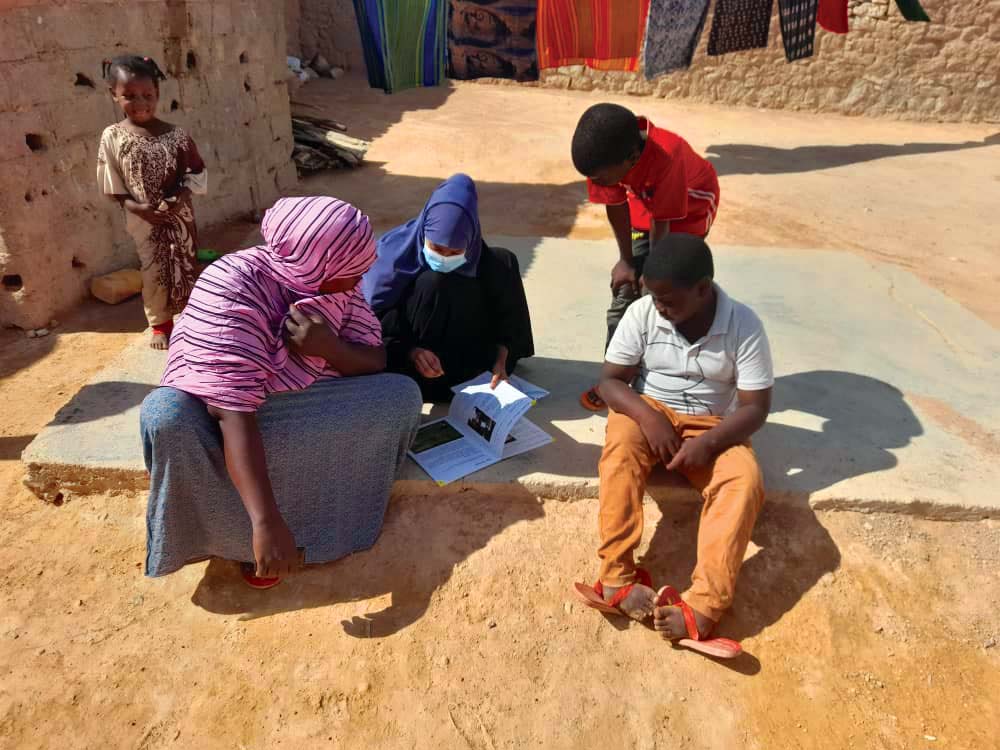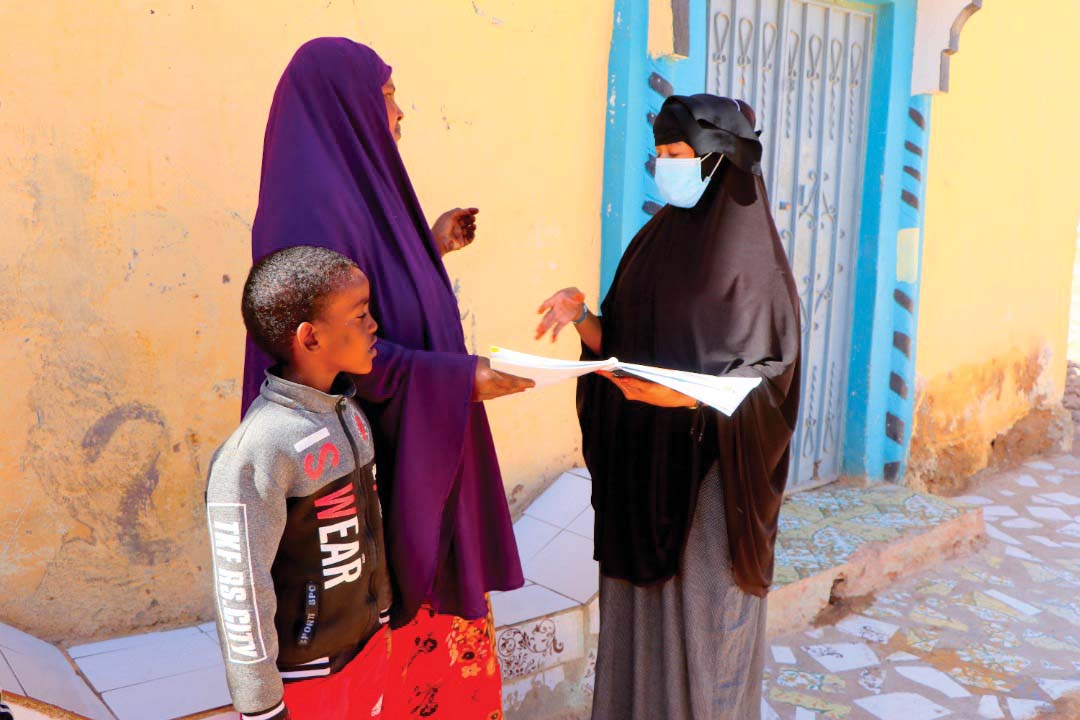Rachel Twigg
Rachel, our guest editor, is a secondary school teacher from Manchester, UK. She reflects on her own experience of teaching during the pandemic and on connections with the experiences of authors in this edition of Enabling Education Review (EER).
‘While teachers, students and families have taken up digital tools en masse, the shift to virtual school has exposed inequalities in access to digital resources.’ OECD, 9 May 20201
When COVID-19 was first detected, education communities were already facing a global crisis: The collective failure of countries to achieve Sustainable Development Goal 4, and high numbers of young people excluded from quality inclusive primary and secondary education. These problems worsened when education facilities were closed to stop the spread of infection. Closures left 1.2 billion students worldwide without in-person learning opportunities.
Adapting to a new normal
Where they had access to the technology, educators like me had to develop virtual learning spaces as alternatives to face-to-face teaching. In the UK, our focus on fresh ‘telegogies’ (distance learning through virtual pedagogies) became the new normal. We spent hours planning strategies to work in tandem with the available technology. In England, some of our learners did not have access to the internet or devices. We needed to provide a range of resources to support self-directed learning and paper-based materials to enable remote learning offline.
Over time, as schools began to re-open, the virtual classroom assignments we asked students to complete were replaced by more traditional classroom-based, teacher-led lessons. The country strived for ‘normality’ while maintaining social distancing and safety restrictions.
Some students who had experienced barriers to learning in formal education settings before the pandemic found that virtual learning was a blessing in disguise. Some neurodiverse learners, for example, appreciated studying at home, away from distractions and the stress of trying to fit in. This highlights the importance of ensuring learners can access diverse learning spaces and opportunities. However, for many, the introduction of virtual learning communities was deeply flawed and demanded more of students, families, and teachers alike.
For educators like me, the development of virtual learning environments increased accountability measures within schools and teaching workloads. In England, weekly written reflections were expected. Meetings and extra-curricular clubs also occupied virtual spaces and took lesson planning time. Ultimately, administrative pressures, increasing workloads, and the blurring of personal and professional space profoundly affected teachers’ wellbeing. Like many, I experienced a prolonged period of burnout.
We spent hours adapting our home learning lessons to support learners’ diverse and complex needs. Nevertheless, I could not silence my inner sceptic and kept asking myself whether this was enough. Would it make a difference for our students? The disparity in access to provision for students went beyond economic biases. Parents of students with additional learning needs faced considerable difficulty managing their children’s complex health, nutrition, and educational needs.
Issues with access
In the UK, learners with additional learning needs and individual education and health care plans could still access face-to-face learning in schools during the lockdowns. However, there was a limited number of spaces available. The priority was to ensure that enough teachers could support the majority of children learning at home and to maintain social distancing rules for those who came into school. Decisions about access to face-to-face opportunities were made on a case-by-case basis.
Students were suddenly learning from home and required technical literacy and skills to access lessons through electronic devices. They had to self-regulate their routines and preparation for learning. Those with additional needs had to take control of their own learning at home, without the usual regular direct check-ins with their key workers who were needed in school to support those learners given face-to-face sessions.
Families struggled to support their children’s access to online learning. Age and other factors affected how much supervision and support learners required from parents. Many parents were also working from home. Households with multiple school-age children often did not have enough devices to give everyone access to online home learning activities, especially when parents needed the devices for work. A lack of reliable connectivity in some areas also caused frustration.
Schools provide more than academic learning opportunities. Children learning from home no longer had the same access to the free school meals that children from lower-income families receive, although many schools still tried to provide food support. The number of children needing this support also increased, as parents became unemployed during the pandemic.
The crises and seismic social shifts created by the pandemic highlighted existing fragilities and inequalities in the education system in the UK and globally. Recognition of racism, sexism, classism, and institutional nepotism have intensified advocacy movements seeking change and support for students from underserved communities.

This edition of EER
The inequalities in access to home learning provision and wider issues I describe above are not unique to my school or the UK. Many of the issues have affected learners globally, and continue to do so. For example, students in Uganda are returning to classrooms in January 2022 after almost two years out of school. The impact of the pandemic has been further amplified in disadvantaged communities, such as those with limited access to electricity or those who have been forcibly displaced. This edition of EER shares articles that both echo my experiences and showcase unique responses to the pandemic in other contexts.
The first article by Reny Indrawati describes a parent’s role in supporting her son’s access to mainstream education in Indonesia, before and during the pandemic. In the next two articles, educators share their experiences of conducting online classes or providing access to learning for those out of school. Kelvin Mugwanga explains how Glad’s House collaborated with local government and other organisations to include street-connected children in initiatives providing additional support and education during the pandemic. And teacher Lina describes her approach to delivering remote education in the Philippines.
As decision-makers developed approaches to home learning provision, some organisations tried to learn from existing education in emergencies initiatives, while others conducted rapid scoping studies to understand needs and plan accordingly. In Armenia, research was conducted into the inclusion of children with additional learning needs to inform the development of further support. Araksia Svajyan takes us through the findings in her article. In his article about Bangladesh, Ripon Sarkar explores how learning from work in low-resource humanitarian contexts informed the adaptation of BRAC Play Labs to support girls’ education during the pandemic.
We also showcase EENET’s own work to support inclusive home learning provision. Collaborating with the Norwegian Association of Disabled (NAD), and local organisations in Somalia, Uganda, Zanzibar and Zambia, EENET developed home learning materials that build parents’ confidence in supporting their children’s home learning. A survey informed the development of the materials and highlighted the situation in 27 countries. In the first of three articles about the home learning project, I explore the findings from nothern Syria with Su Corcoran and Helen Pinnock. The second article outlines the development and rollout of the materials, while the third highlights key findings from a review of the project.
In the second half of this edition, authors share: their experiences of supporting learners during the pandemic; findings from research about inclusive education or the development of educational resources; and opportunities to develop young people’s activism through virtual communities.
Mike Wamaya from Project Elimu describes the need for food support for communities in Kibera, and the organisation’s education focus on adolescent girls during school closures. Bethany Farrar draws on the findings from her Master’s dissertation, focused on the issues facing learners with disabilities and the approaches taken by a special school in the North of England. Ling Fong, a teacher who works with children who are hard of hearing, shares her experience of supporting home learning in Malaysia.
Luz Mojtar-Mendieta and Ignacio Calderón-Almendros explain their work with a group of Spanish high school students to develop an advocacy guide that encourages other students to visualise and build their desired schools. Writing about research conducted before the pandemic, I-Jung Grace Lu shares findings from her doctoral research into the importance of virtual support communities for parents of children with disabilities in Taiwan. Finally, Fiona Haniak-Cockeram, Su Corcoran and Sarah Lister describe the development of an app and a digital portfolio of supplementary materials that use games-based learning of mathematics and language simultaneously.

EENET – as a network of learners, caregivers, educators, and other education stakeholders – has always advocated for more inclusive educational opportunities. The articles included here highlight the importance of connections, collaborating as a community, exchanging knowledge, and ultimately influencing change. By finding comfort in the unpredictable, and power in our vulnerability, we must no longer be afraid to ‘unmute’, and be the change we want to see.
[1] https://bit.ly/EEER10-12